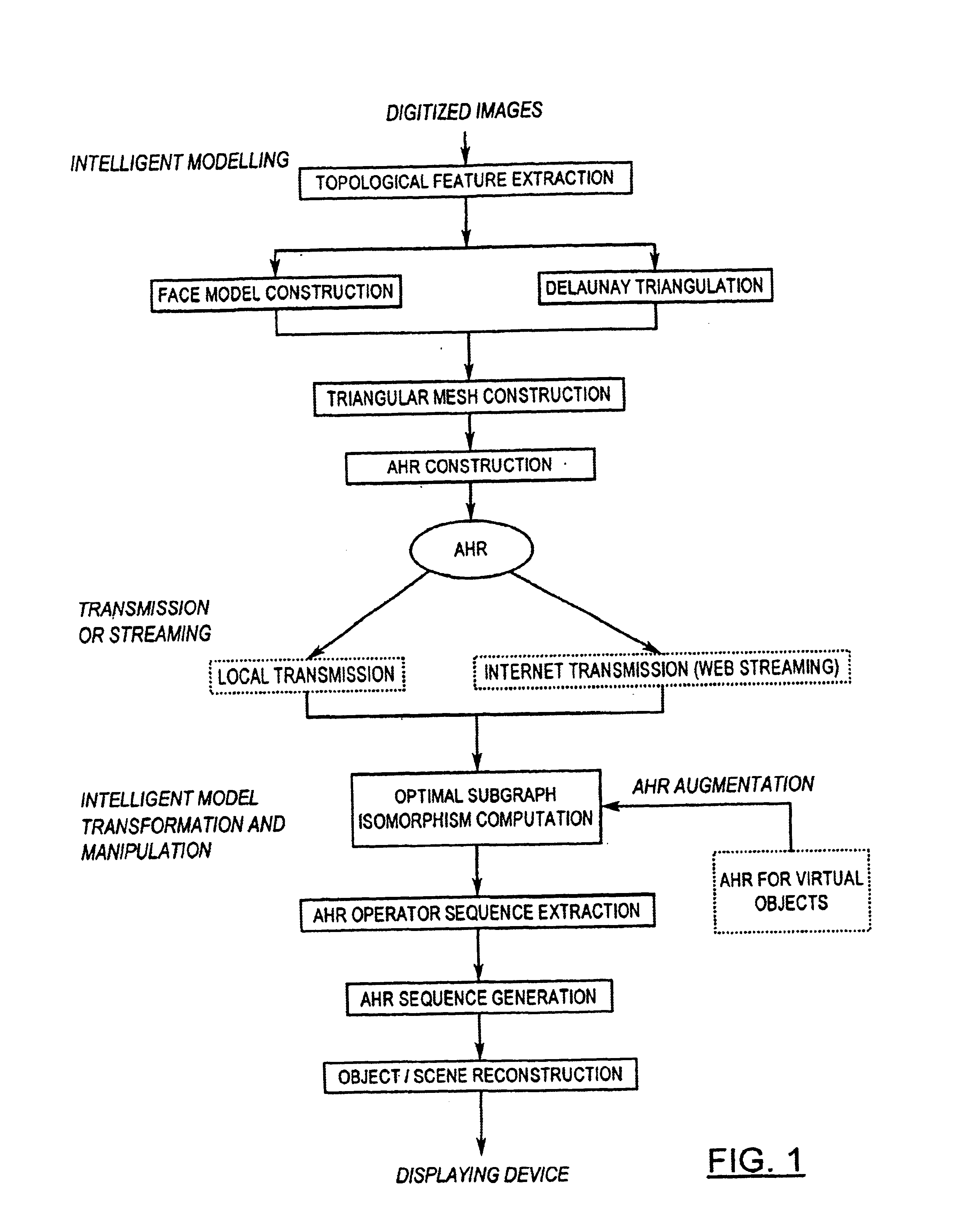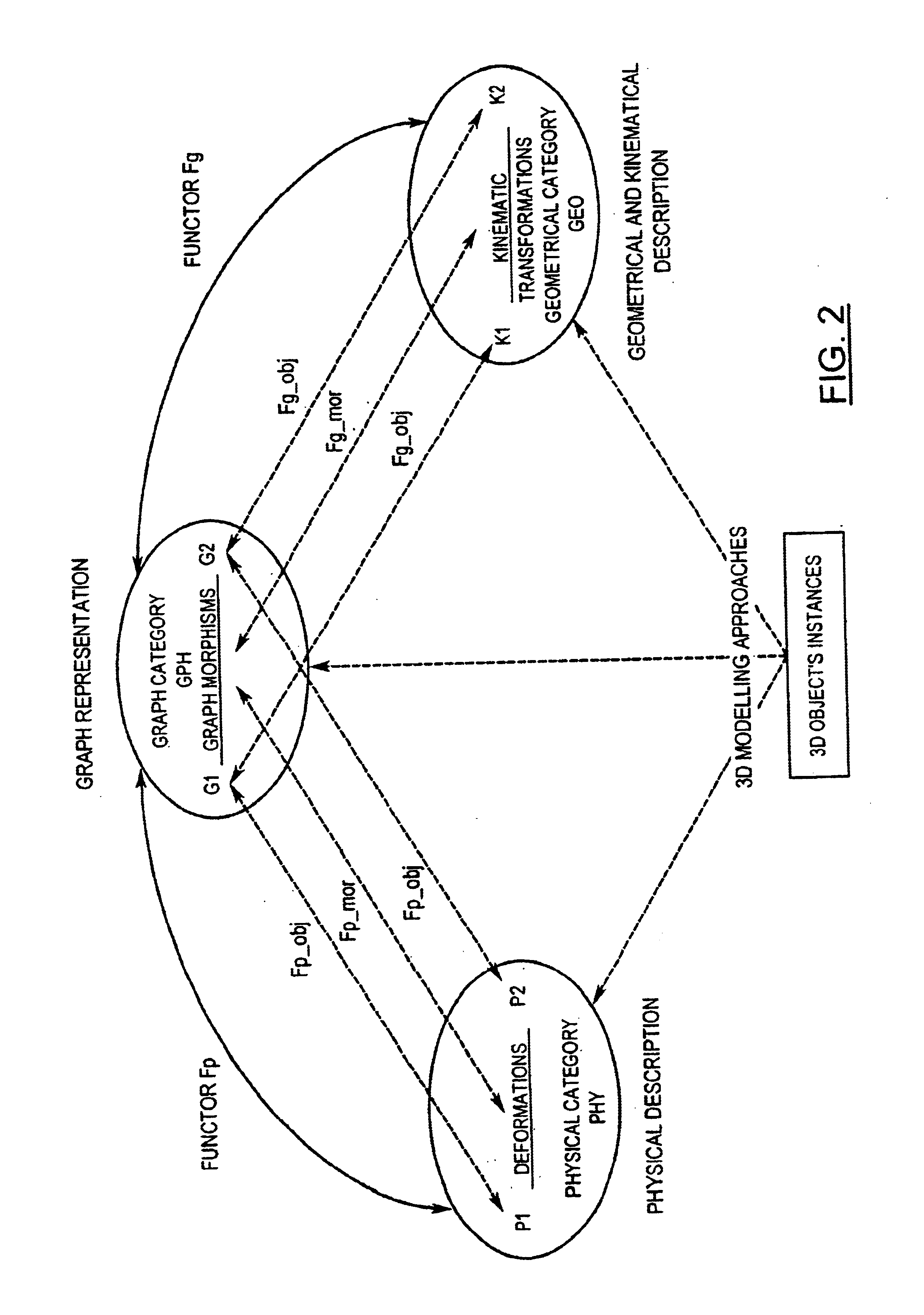Intelligent modeling, transformation and manipulation system
a technology of intelligent modeling and transformation, applied in the field of intelligent 2d and 3d object and scene modeling, transformation and manipulation, can solve the problems of not enabling symbolic or knowledge manipulation, current vision and graphics systems do not meet this requirement, and systems generally lack the capability of automating learning unknown types of motion and movement of modeled objects
- Summary
- Abstract
- Description
- Claims
- Application Information
AI Technical Summary
Problems solved by technology
Method used
Image
Examples
Embodiment Construction
The present invention provides a new form of attributed hypergraph representation (AHR), which when coupled with triangular mesh surface approximation, provides a highly efficient method for both 2D and 3D modeling. For 3D objects, surface modeling is preferred to solid modeling since it fits both computer vision and computer graphics applications as common vision sensors provide surface data only. A net-like data structure is designed to handle the dynamic changes of the representation corresponding to the object's movements and deformations so as to overcome the inflexibility of graph structure. FIG. 1 gives a block diagram of the integrated intelligent modeling, transformation and manipulation system based on AHR.
For any scientific study on the representation, in particular, for general object modeling, the fundamental problem is; given a collection of instances of a certain entity, a set of transformations that can be applied on the entity, and an isomorphism or equivalent relat...
PUM
 Login to View More
Login to View More Abstract
Description
Claims
Application Information
 Login to View More
Login to View More - R&D
- Intellectual Property
- Life Sciences
- Materials
- Tech Scout
- Unparalleled Data Quality
- Higher Quality Content
- 60% Fewer Hallucinations
Browse by: Latest US Patents, China's latest patents, Technical Efficacy Thesaurus, Application Domain, Technology Topic, Popular Technical Reports.
© 2025 PatSnap. All rights reserved.Legal|Privacy policy|Modern Slavery Act Transparency Statement|Sitemap|About US| Contact US: help@patsnap.com



